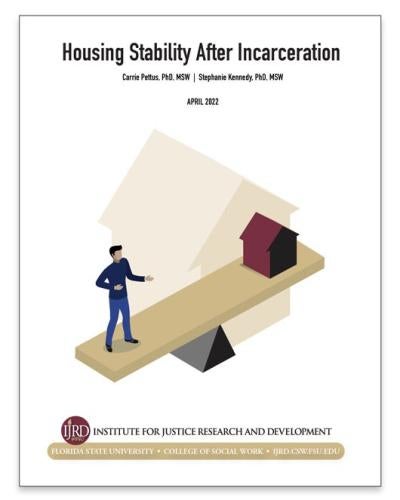
Housing Stability After Incarceration
Published:
| Author: Carrie Pettus, Stephanie Kennedy
This brief report examines changes in where and with whom individuals live, whether they consider themselves to be homeless, and whether they are paying rent or mortgage where they stay between leaving prison to 14-months post-release. These findings are situated within the broader context of reentry support, exploring the impact of both incarceration and reentry on families and the need to focus resources on those most in need.
Category: 5-Key Model for Reentry
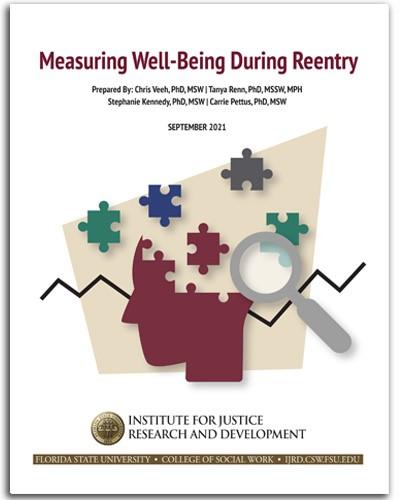
Measuring Well-Being During Reentry
Published:
| Author: Christopher Veeh, Tanya Renn, Stephanie Kennedy, Carrie Pettus
A growing number of scholars and reentry practitioners are seeking alternative approaches to identify how community stability and success can be measured for those returning home from incarceration to our communities. Our team developed a well-being-oriented conceptual framework – the Well-Being Development Model – and a manualized reentry program approach – the 5-Key Model for Reentry – which focus on human potential and thriving.
Category: 5-Key Model for Reentry, Well-Being

Brief Report: COVID-19's Impact on Reentry Research
Published:
| Author: Carrie Pettus, Stephanie Kennedy
When the pandemic began to impact communities across the United States in March 2020, most community members were concerned about how their lives would be affected. Researchers with ongoing studies were also concerned about how the pandemic would affect their ability to assess outcomes in their ongoing research.
Category: 5-Key Model for Reentry
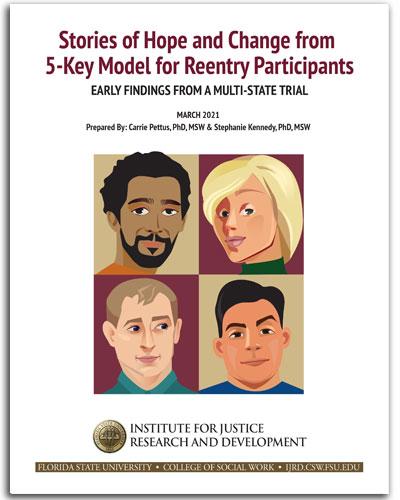
Stories of Hope and Change
Published:
| Author: Carrie Pettus, Stephanie Kennedy
This report presents interviews conducted with four 5-Key Model participants. Participants describe their lives and tell stories about overcoming challenges and finding success. They also describe how the 5 Keys helped them to make significant, positive changes to their lives and the ways 5-Key Model practitioners supported them in making these changes.
Category: 5-Key Model for Reentry
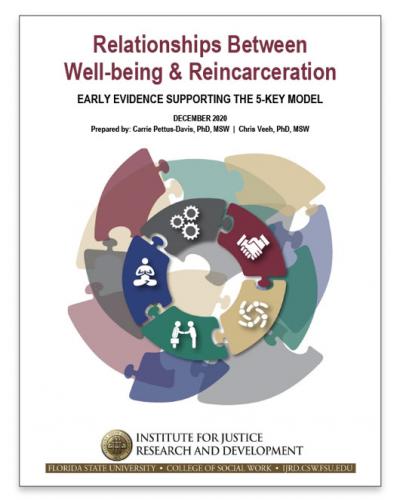
Associations between Well-Being and Reincarceration
Published:
| Author: Carrie Pettus-Davis, Christopher Veeh
Preliminary findings from the 5-Key Model study suggest that participation in 5-Key Model services was associated with reduced reincarceration at 8 and 15 months post-release. Increased overall well-being and increased well-being on each of the 5 Keys were also associated with reduced reincarceration; those receiving the 5-Key Model had higher levels of well-being at 15 months post-release.
Category: 5-Key Model for Reentry, Well-Being

COVID-19, Incarceration, and Reentry
Published:
| Author: Carrie Pettus-Davis, Stephanie Kennedy, Faye Miller
This report presents data on the pandemic-related experiences of incarcerated individuals and individuals recently released from incarceration. Study participants report how they learned about the pandemic while incarcerated and identified the strategies both the facilities they were incarcerated in and they themselves as individuals took to prevent infection. They described stress, anxiety, fear, and worry as they reflected on their incarceration during the pandemic.
Category: 5-Key Model for Reentry, Well-Being, COVID-19

THE OPIOID CRISIS AMONG 5-KEY MODEL STUDY PARTICIPANTS
Published:
| Author: Carrie Pettus-Davis, Shelby Pederson
Learn how opioid use affects individuals in our first four 5-Key Model Phase 1 states - Florida, Kentucky, Pennsylvania, and Texas - as they leave incarceration and return home.
Category: 5-Key Model for Reentry
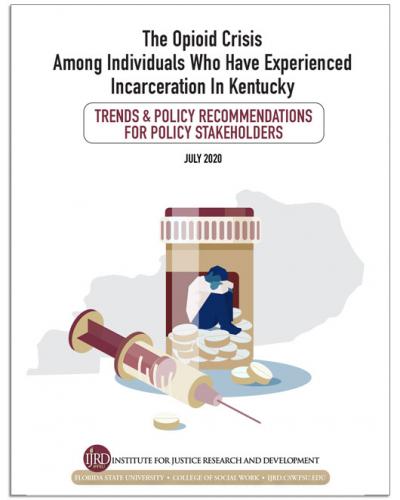
THE OPIOID CRISIS AMONG INDIVIDUALS WHO HAVE EXPERIENCED INCARCERATION IN Kentucky
Published:
| Author: Carrie Pettus-Davis, Shelby Pederson
Learn how opioid use affects individuals in Kentucky as they leave incarceration and return home. The reentry period is a high-risk time for individuals who use opioids and for those diagnosed with an opioid use disorder. Policy recommendations include infusing the Opioid Use Disorder Continuum of Care into both correctional and community-based settings to increase screening, linkage, initiation, and retention of affected individuals into prevention or treatment services.
Category: 5-Key Model for Reentry
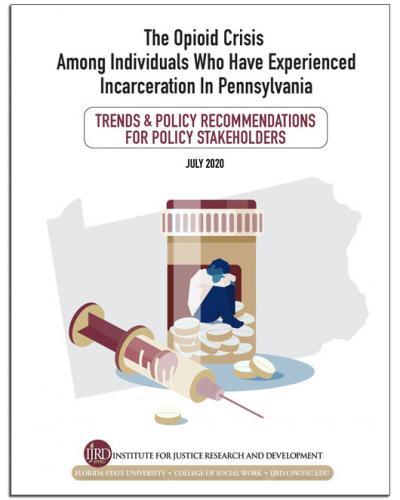
THE OPIOID CRISIS AMONG INDIVIDUALS WHO HAVE EXPERIENCED INCARCERATION IN Pennsylvania
Published:
| Author: Carrie Pettus-Davis, Shelby Pederson
Learn how opioid use affects individuals in Pennsylvania as they leave incarceration and return home. The reentry period is a high-risk time for individuals who use opioids and for those diagnosed with an opioid use disorder. Policy recommendations include infusing the Opioid Use Disorder Continuum of Care into both correctional and community-based settings to increase screening, linkage, initiation, and retention of affected individuals into prevention or treatment services.
Category: 5-Key Model for Reentry
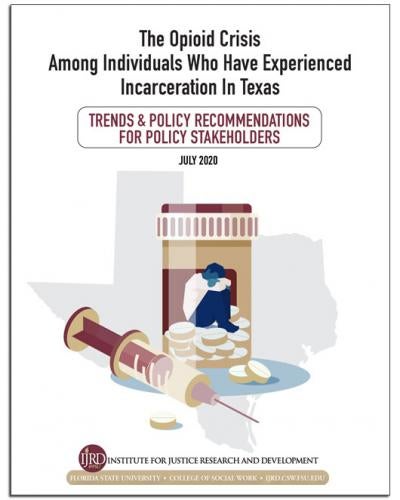
THE OPIOID CRISIS AMONG INDIVIDUALS WHO HAVE EXPERIENCED INCARCERATION IN Texas
Published:
| Author: Carrie Pettus-Davis, Shelby Pederson
Learn how opioid use affects individuals in Texas as they leave incarceration and return home. The reentry period is a high-risk time for individuals who use opioids and for those diagnosed with an opioid use disorder. Policy recommendations include infusing the Opioid Use Disorder Continuum of Care into both correctional and community-based settings to increase screening, linkage, initiation, and retention of affected individuals into prevention or treatment services.
Category: 5-Key Model for Reentry
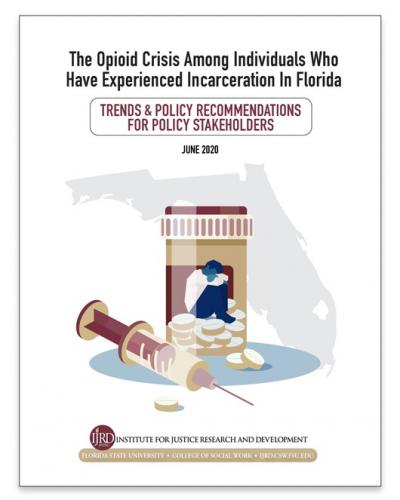
The opioid crisis among individuals who have experienced incarceration in Florida
Published:
| Author: Carrie Pettus-Davis, Shelby Pederson
Learn how opioid use affects individuals in Florida as they leave incarceration and return home. The reentry period is a high-risk time for individuals who use opioids and for those diagnosed with an opioid use disorder. Policy recommendations include infusing the Opioid Use Disorder Continuum of Care into both correctional and community-based settings to increase screening, linkage, initiation, and retention of affected individuals into prevention or treatment services.
Category: 5-Key Model for Reentry, Results for Policymakers

Trauma and Loss During Reentry
Published:
| Author: Carrie Pettus-Davis, Tanya Renn, Stephanie Kennedy
This report presents data about the extremely stressful life events experienced by study participants in the 8 months after they left incarceration and returned home. These stressful life events included losing a loved one to homicide, having been violently assaulted, witnessing violence and death in the home or community, finding out about the death or serious injury of a loved one, being diagnosed with a life-threatening illness, and losing critical resources like housing, employment, income, transportation, and social support.
Category: Reentry, Well-Being, 5-Key Model for Reentry

Going Back to Jail Without Committing a Crime
Published:
| Author: Carrie Pettus-Davis, Stephanie Kennedy
This report presents data on reasons other than criminal behavior that 5-Key Model study participants report they were re-arrested.
Category: Reentry, Well-Being, 5-Key Model for Reentry

Employment and Behavioral Health-5-Key Model Preliminary Results for Policy Stakeholders
Published:
| Author: Carrie Pettus-Davis, Tanya Renn, Christopher Veeh
This report features preliminary 5-Key Model results on study participant employment and behavioral health outcomes approximately eight months post-release. Results are presented by state to maximize usefulness to policy stakeholders.
Category: 5-Key Model for Reentry, Results for Policymakers

When Death Follows Release
Published:
| Author: Carrie Pettus-Davis, Stephanie Kennedy
This report highlights the reentry period - leaving incarceration and returning home - as the highest risk time for death in a formerly incarcerated individuals’ life. The purpose of this report is to explore the deaths that occur during the reentry period from several different vantage points.

